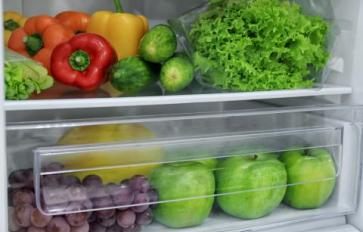
Food deserts are defined as areas that are devoid of fruit, vegetable, and fresh food options. They tend to be areas populated by poor and working-class families. According to the USDA, food deserts tend not to have enough grocery stores, farmers’ markets, or food providers for the demand. The problem of food deserts was so pervasive that First Lady Michelle Obama dedicated a lot of time to this topic through her Let’s Move initiative. But how did food deserts happen? And who do they affect the most?
- Grocery stores are moving to the suburbs. One study found that food deserts are more likely to be in working-class areas because quality grocery stores are moving toward the suburbs. This means that people in inner-city areas who already lack access to fresh food are seeing their choices decrease.
- Food deserts mostly affect minorities. A review of studies by the Center for Disease Control (CDC) states that minorities are mostly affected by food deserts. African-Americans are more likely to live in places without midsize or large chains of grocery stores that offer quality produce. Distance is also an issue: African-Americans and those in low-income brackets also tend to live farther from the grocery stores available in their areas.
- Those who live in food deserts also tend to have higher rates of obesity. This means that those who live in low-income areas, inner cities, and who are African-American are affected, or potentially more affected, by a food desert than those in higher classes. In fact, only 8% of African-Americans live in areas that have one grocery store or more. For white Americans, the figure is at 31%.
- Living in a food desert means depending on convenience stores. Food deserts tend to have many convenience stores that locals depend on for food. Unfortunately, these stores carry mostly processed foods that offer little-to-no nutritional value.
- Those with food stamps have limited options. Food deserts create a sort of chain that can be explained by a variety of factors that take race, class, and geography into account. As such, if low-income residents that use food stamps try to shop from the convenience stores available in their area, they may find that it’s hard to use their benefits. This is because the USDA has an approved list of food items SNAP beneficiaries can buy, and many convenience foods don’t make the list.
Even despite these facts, others also argue that poverty poses more of a problem than food selection. A Slate article posits the idea that decreasing poverty might be more helpful than simply opening more grocery stores in food deserts. What we do know concretely is that having limits on wholesome food choices for any reason—whether it’s due to systemic problems or availability—will have an impact on one’s health. A diet rich in processed, sugary food can lead to health problems and can even affect one’s mood. So what are some solutions?
There is a lot of work that needs to be done at the policy level, but the fact is that many states are moving to increase their minimum wage. Other solutions include creating a group of volunteers such as Gather Baltimore. This community-led initiative was created by Arthur Morgan to collect food that is normally discarded from farmers’ markets and other venues. Volunteers then distribute this produce to families who can use this food.
Some communities have also implemented grocery trucks that deliver fresh produce to areas that lack grocery stores. In Los Angeles, a project called Market Makeovers works with local corner stores to provide fresh food options to their already existing customers. The project also trains local community members on health and diet choices and physical activity, and organizes locals so that they support healthy food initiatives. Youth in low-income areas are also tapped as ambassadors for Market Makeovers to help create lasting change in their community. These solutions are only temporary until larger policy shifts eliminate food deserts, but they show that a caring community can make changes that enable a healthier lifestyle for all members.








